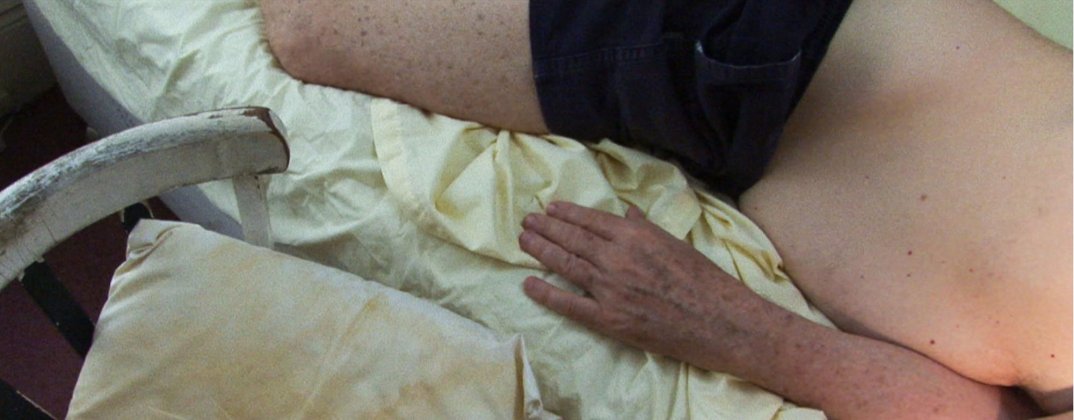Dani Marti | Bacon's Dog
16 July – 14 August 2010
»
«

the hand has only known one body 2010 digital prints 36 x 51 cm framed

the reality and the illusion 2010 digital print 36 x 51 cm framed

my sad captain 2010 digital print 36 x 51 cm framed

Dani Marti Bacon's Dog, 2010 installation view

Dani Marti Bacon's Dog, 2010 detial

Dani Marti It's all about Peter, 2010 plastic, 205 x 320 x 18 cm

Dani Marti It's all about Peter, Take Two, 2010 plastic, 120 x 162 x 17 cm

Dani Marti it’s just a whisper that might seem like a shout, 2010 digital photograph, 5.5 x 13 cm
Dani Marti: Finding Peter Fay
by Jason Smith, Director, Heide Museum of Modern Art
Consider this portrait and be aware of your own vulnerability. See the pain and beauty of a man in awe of a part of himself he has not known. Feel the intensity of this transforming encounter and Peter’s disclosure. Do not fear revelation through intimacy. Feel the fear and do it anyway.
"let all your pores be oozing....let your eyes be burning like lasers.....let your body smell of such earthly delights that would drive a man insane....and let every inch of your body know that it will be made the stuff of my dreams.....”
Peter Fay to Dani Marti, My Sad Captain
Sex is a fundamental, volatile force within the animal that we are. So too is the need to realise our sexual being, to feel its liberation and reconcile, somehow, its coexistence with other layers of a complex self. In some lives that reconciliation may happen quietly as part of an internal, private awareness. In others, the sexual self is realised through the tender intercession of another. That is the case with Bacon’s Dog, an emotionally intense and intimate view of Dani Marti’s recent personal and creative relationship with Peter Fay.
Bacon’s Dog is a portrait configured in multiple parts: video, video stills, sculpture, and a text work, My Sad Captain, distilled from the uninhibited email exchanges between Marti and Peter as their union evolved.
Marti’s practice acknowledges the challenge and paradox of portraiture: that it is simultaneously full of potential and inevitably imprecise in its revelation of the subject. But there is something in his video portraits that tantalises and absorbs the viewer perhaps more than still images: they provide access to the performative body, or as Anthony Gardener has observed, ‘What they hint at is a more contemporary realm of the self that we may not even know exists, yet which is released and revealed through tics, gestures and uncontrollable responses’.(i)
In the video portrait, Bacon’s Dog, the gestures of the hand must be recognisable to all of us: reaching, needing, clasping, holding on for dear life. Here is ‘the hand that has only known one body’, and it alternates between tentative and fevered searching for a truth in desire made flesh. Time and space are disrupted in this work. We encounter a man absolutely present in moments of self-awareness and rapture. But just as Peter states in My Sad Captain, that ‘it's as if a glass wall were being broken, a chance for the hand, eye, heart to go past that screen’, the screen of this video portrait for us invites and refuses proximity. As with all portraiture, we can only find and know so much.Marti’s video works are central to an expanding international field of moving-image portraiture that unsettles the conventions and boundaries of the genre, and confronts some of the ethical dilemmas of representation. In a contemporary culture of dangerously persuasive conservatism, Marti fearlessly rephrases the language of documentary to scrutinise, and participate (sometimes literally) in the nature of sex and self-love, and the despair of self-loathing.The title Bacon’s Dog is Peter’s recollection of Francis Bacon’s 1953 painting Man with dog (The Albright Knox Gallery, Buffalo, NY) in which a grey/white dog on a lead stoops over a street drain, with only the black-trousered legs of his master visible. Bacon at this time was also immersed in painting increasingly erotic images of the male body, and in personal sexual relationships that summoned forth sado-masochistic desires. As Bacon’s Dog, Peter makes explicit his submissiveness to desire and want. What Marti states as the ‘hopelessness of the endeavour’(ii) of portraiture finds an abstract counterpoint in large-scale woven rectilinear works that range in evocation from the camp to the fetishistic, and in this exhibition in two enormous conglomerations of assorted plastic objects obsessively collected by Peter over a ten year period. Was collecting them about a subjugation and transfer of desire; of an ongoing denial of other needs; of seeing in the dismembered plastic hands of dollies the caresses he never thought he was worthy of feeling?By laboriously and, yes, lovingly melting Peter’s collected objects into a recognisable/unrecognisable conglomerate, Marti reconfigures Peter – from disintegrated units to something unified. Just as in Bacon’s Dog: we recognise and don’t recognise. This is the enigma of the portrait: Peter is here, and, exquisitely, not here.i Anthony Gardener, unpublished paper on Dani Marti, 2010
ii Dani Marti, artist statement, 2008